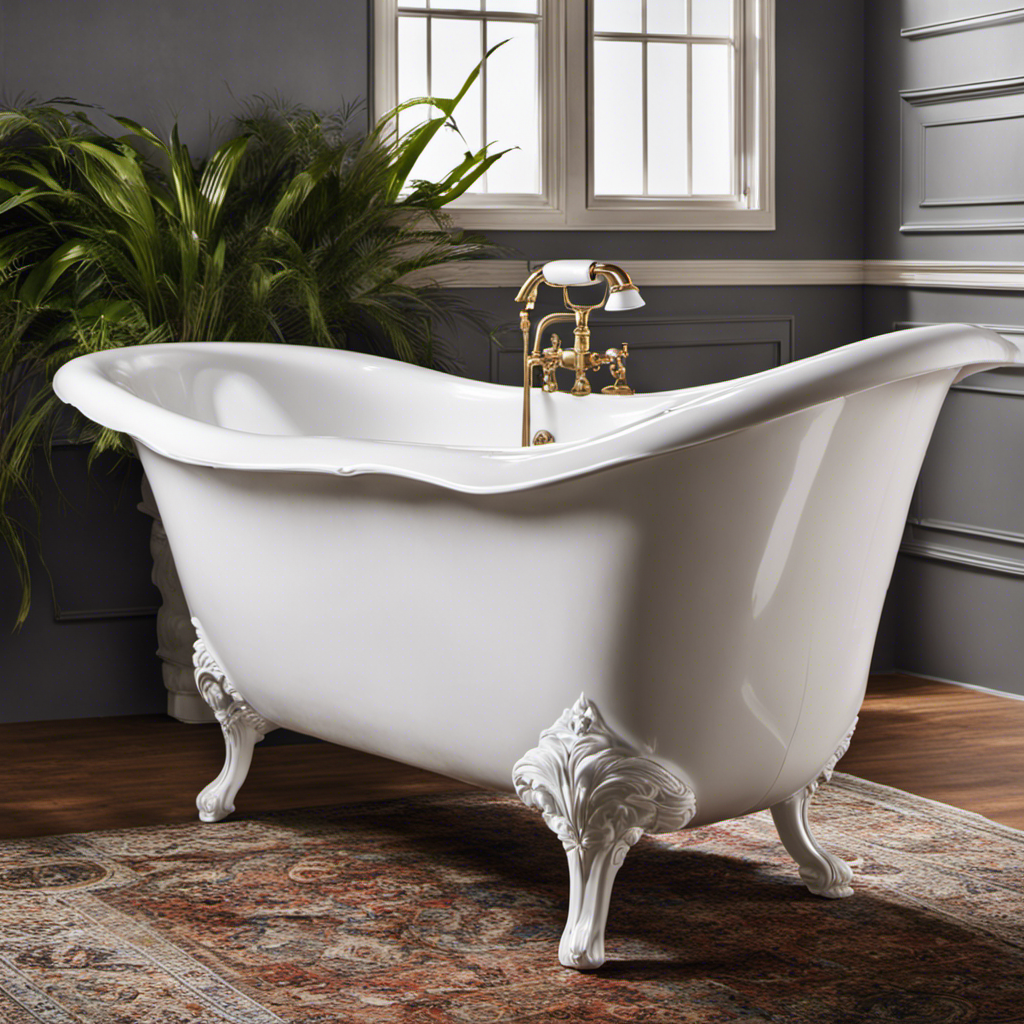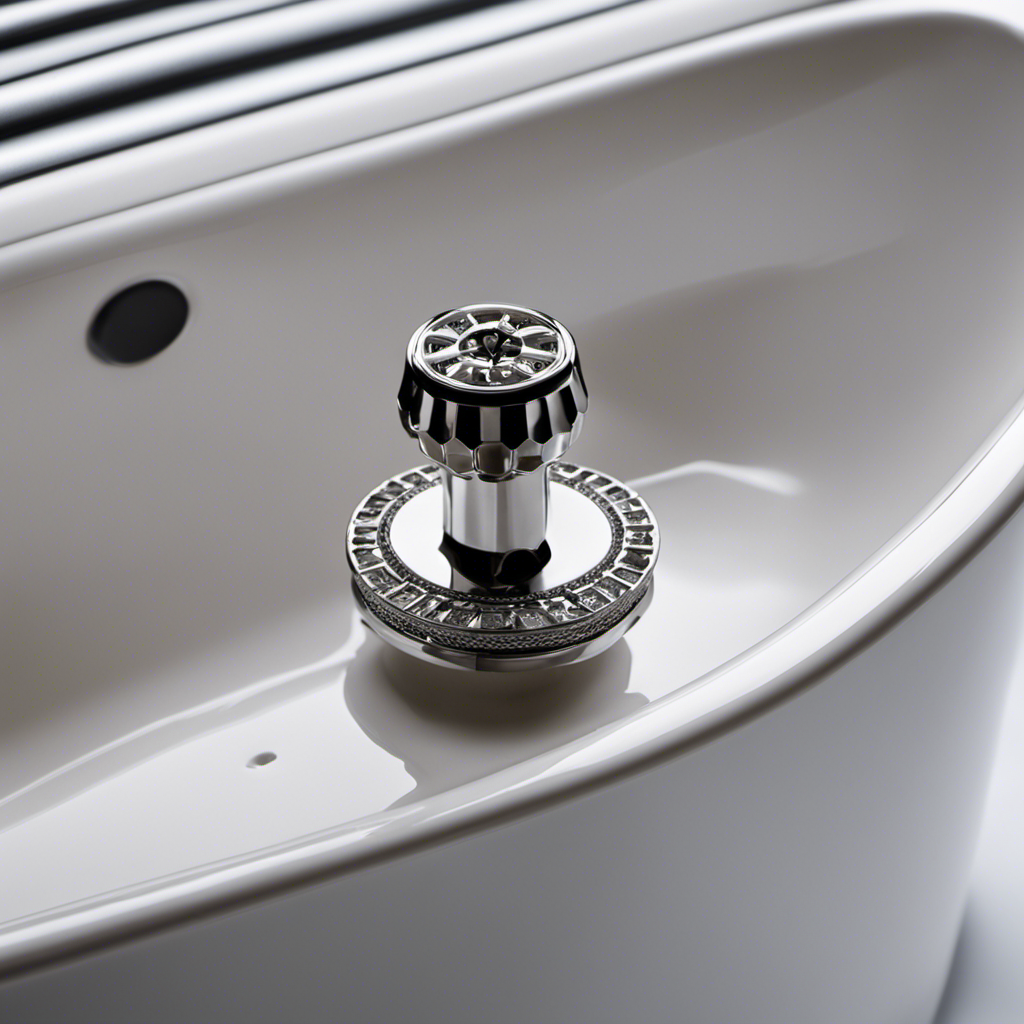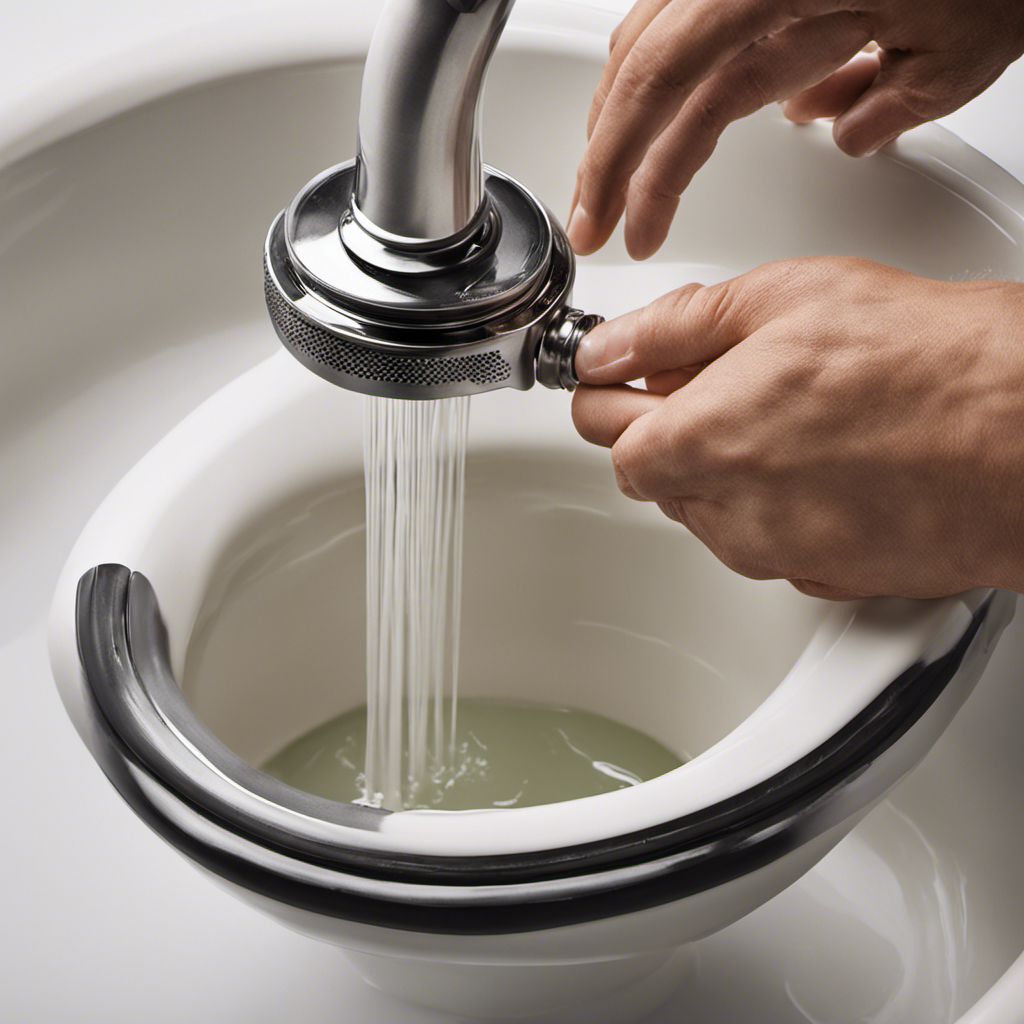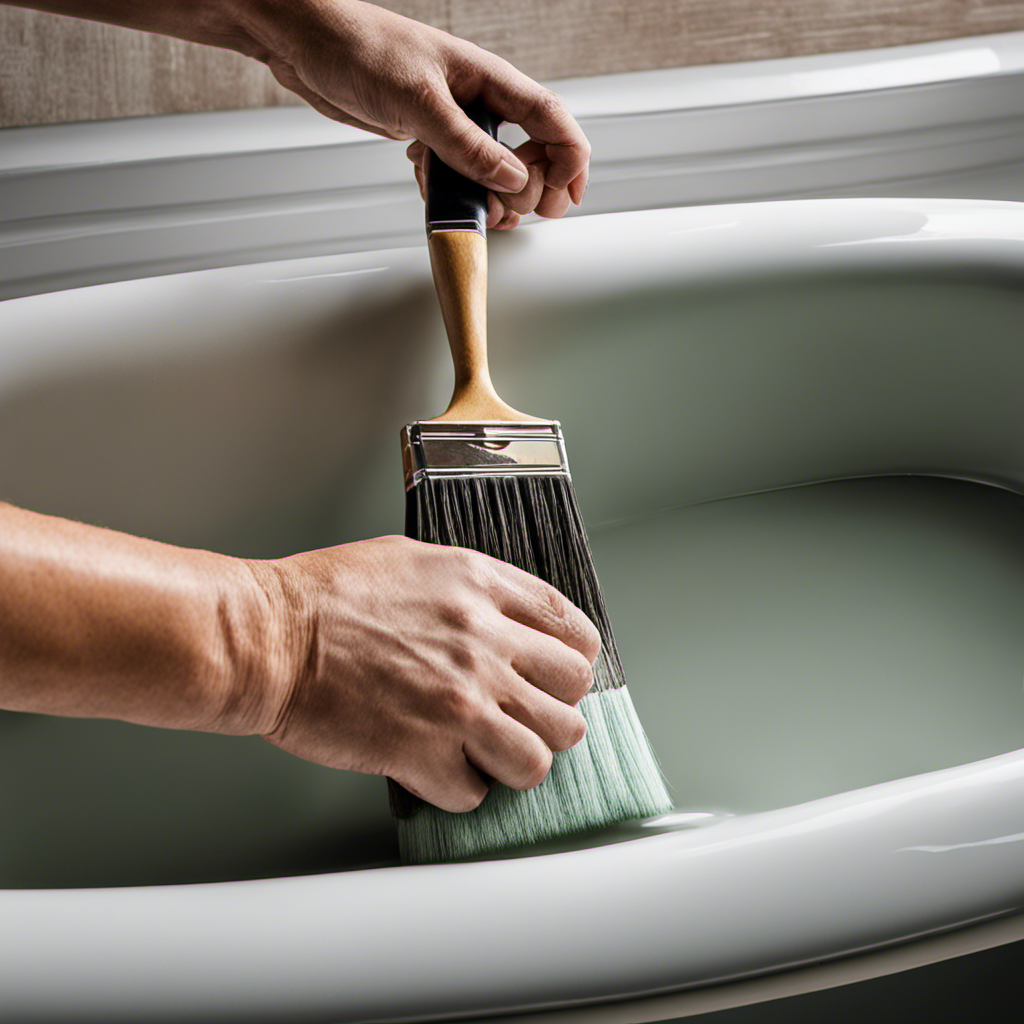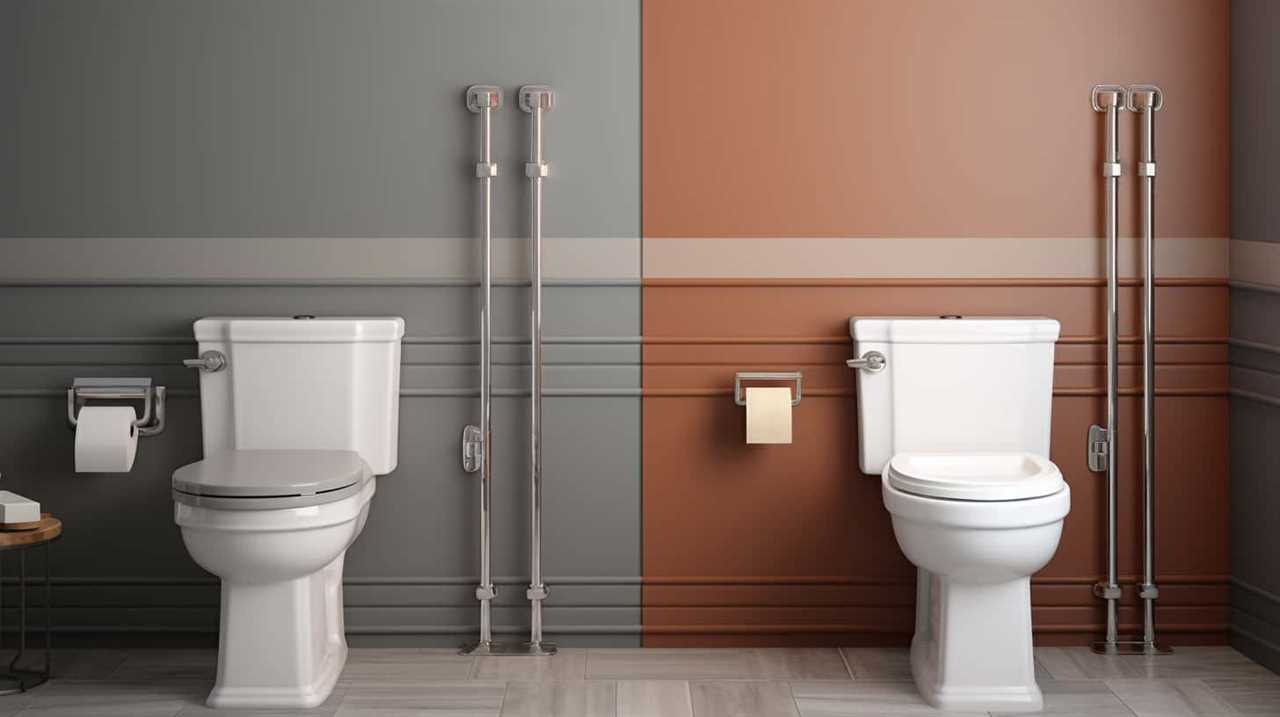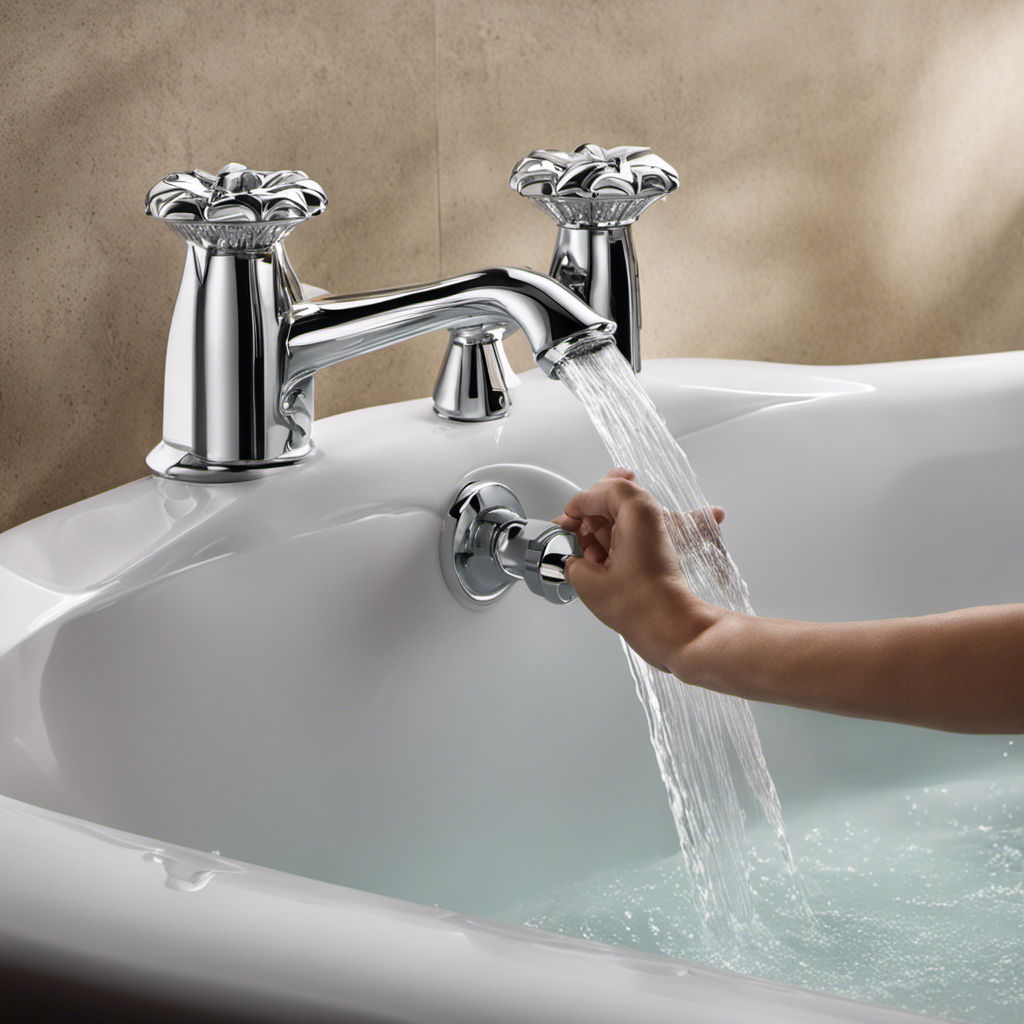I know what you’re thinking – refinishing an old bathtub sounds like a daunting task. But trust me, with the right tools and a little patience, it’s a rewarding project that can transform your bathroom.
In this article, I’ll guide you through the step-by-step process of how to refinish an old bathtub. From preparing the surface to applying the refinishing coating, I’ll provide detailed instructions and tips to ensure your bathtub looks brand new again.
Key Takeaways
- Properly preparing the bathtub surface is crucial before refinishing, including removing old paint or coatings, cleaning thoroughly, and ensuring it is free from dirt and grease.
- Choosing the right refinishing products is important, considering the specific needs of the bathtub and using products designed for the bathtub material (porcelain, acrylic, or fiberglass).
- Cleaning and repairing the bathtub surface is necessary before refinishing, using appropriate cleaning products for common issues like soap scum buildup, rust stains, and stubborn stains.
- When applying the refinishing coating, it is important to thoroughly clean and dry the bathtub, choose a suitable color, lightly sand the surface, and follow the manufacturer’s instructions for an even application.
Preparing the Bathtub Surface
Before you begin refinishing the bathtub, make sure you’re adequately prepared by cleaning and sanding the surface. Bathtub surface preparation is crucial for achieving a smooth and long-lasting finish.
Start by removing any old paint or coatings from the surface. Use a paint stripper or a chemical solution specifically designed for removing paint. Apply the stripper evenly and let it sit for the recommended time. Then, using a putty knife or a scraper, gently scrape off the softened paint. Be careful not to damage the bathtub surface.
Once all the old paint is removed, thoroughly clean the surface with a mild detergent and water. Rinse it well and let it dry completely before moving on to the next step.
Now that you have prepared the bathtub surface, it’s time to choose the right refinishing products.
Choosing the Right Refinishing Products
When selecting the appropriate products, it’s important to consider the specific needs of your bathtub. Understanding application techniques and comparing different brands will help you make an informed decision. Here are some key points to keep in mind:
-
Surface Preparation: Before applying any refinishing products, ensure that the bathtub surface is properly cleaned and free from any dirt, grime, or grease. This will ensure better adhesion and a smoother finish.
-
Product Compatibility: Different bathtubs may require different types of refinishing products. It’s essential to choose products that are specifically designed for your bathtub material, whether it’s porcelain, acrylic, or fiberglass.
-
Brand Reputation: Research different brands and read customer reviews to understand which ones are known for producing high-quality refinishing products. Look for brands that have a reputation for durability, ease of application, and long-lasting results.
Cleaning and Repairing the Bathtub
To properly clean and repair the bathtub, it’s important to assess any damages or stains and use appropriate cleaning products.
When it comes to cleaning techniques, it’s essential to know the right methods for tackling common bathtub problems.
One common issue is soap scum buildup. To remove it, I recommend using a mixture of white vinegar and dish soap. Simply apply the solution to the affected areas, let it sit for a few minutes, and then scrub with a non-abrasive sponge.
Another common problem is rust stains. For this, I suggest using a rust remover specifically designed for bathtubs. Apply the product, let it work its magic, and then rinse thoroughly.
Lastly, for stubborn stains, a paste made of baking soda and water can be highly effective. Just apply, scrub gently, and rinse.
Applying the Refinishing Coating
You’ll want to start by thoroughly cleaning the bathtub before applying the refinishing coating. This step is crucial to ensure a smooth and long-lasting finish. Once the tub is clean and dry, you can begin the refinishing process.
Here are some tips for a smooth finish:
-
Choosing the best color: Consider the overall aesthetic of your bathroom and choose a color that complements it. Neutral shades like white or gray are timeless options, while bold colors can add a pop of personality.
-
Prepare the surface: Use a fine-grit sandpaper to lightly sand the bathtub surface. This will help the refinishing coating adhere better and create a smoother finish.
-
Apply the coating: Follow the manufacturer’s instructions to apply the refinishing coating. Use even strokes and ensure an even application. Work in small sections to avoid streaks or unevenness.
Caring for the Refinished Bathtub
Maintaining the newly coated surface is important to preserve its longevity and appearance.
After refinishing your bathtub, it is crucial to practice proper bathtub maintenance to prevent future damage.
To keep your refinished bathtub looking its best, avoid using abrasive cleaners or harsh chemicals that can damage the coating. Instead, use mild, non-abrasive cleaners and a soft cloth or sponge to gently clean the surface.
Regularly wipe down the bathtub after each use to remove any soap scum or residue.
Avoid using bath mats with suction cups, as they can peel off the coating.
Additionally, be cautious with sharp objects and avoid dropping heavy items on the surface to prevent any scratches or chips.
Conclusion
After following these steps, my old bathtub looks like a brand new centerpiece in my bathroom. The surface is smooth and shiny, with no signs of wear or rust.
I can imagine myself relaxing in a warm bubble bath, surrounded by the elegance of my refinished bathtub.
The process was simple yet effective, and I now have a beautiful and durable bathtub that will last for years to come.
Don’t let your old bathtub go to waste, give it a makeover and transform your bathroom into a luxurious oasis.
